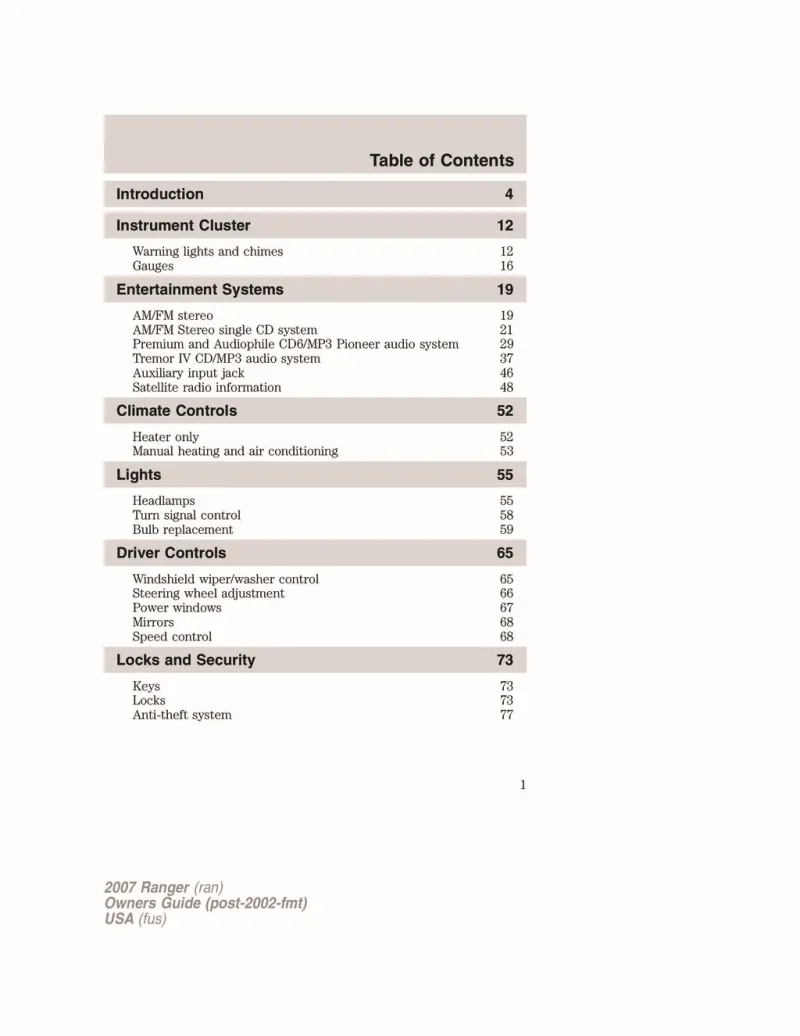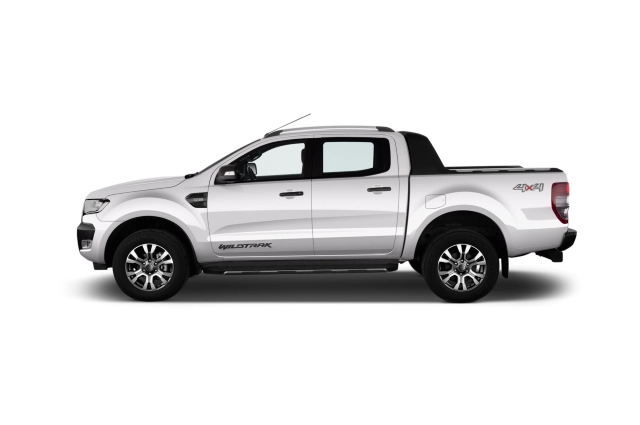2007 Ford Ranger Owner's Manual

Table of Contents
2007 Ford Ranger Overview
Introduction
The 2007 Ford Ranger is a compact pickup truck that embodies the rugged spirit of the American automobile. Designed for versatility, it’s an ideal choice for those seeking both functionality and style. Whether you're tackling tough jobs or hitting the open road, the Ranger stands out with its robust build and reliable performance, making it a popular choice among truck enthusiasts and casual drivers alike.
Powertrains
The 2007 Ranger offers a range of powerful and efficient powertrains, allowing buyers to select an option that best suits their needs. The base model comes with a 2.3-liter four-cylinder engine, delivering an adequate 143 horsepower, perfect for light-duty tasks and city driving. For those requiring more capability, the available 4.0-liter V6 engine produces 207 horsepower, offering a more spirited driving experience and improved towing capacity. Both engines are paired with a five-speed manual transmission or an optional five-speed automatic, providing a blend of control and convenience.
Trims
This model is available in three distinct trims: the XL, XLT, and Sport. The XL base model emphasizes utility and features essential amenities, while the XLT adds comfort with enhanced interior features and upgraded audio systems. The Sport trim further elevates the Ranger’s appeal with sporty accents, premium upholstery, and a more aggressive stance that caters to those wanting a truck with personality.
Features
The 2007 Ford Ranger comes equipped with a range of features focused on both safety and comfort. Standard offerings include anti-lock brakes, a solid sound system with CD player, and ample cargo space. Higher trims add conveniences such as power windows and locks, keyless entry, and available leather seating. Its thoughtful design ensures practicality, while options for high-tech upgrades enhance the driving experience.
Owner’s Manual
For new owners, the 2007 Ford Ranger’s owner’s manual is an invaluable resource, providing comprehensive guidance on maintenance schedules, troubleshooting tips, and detailed explanations of features. It serves as a helpful companion, empowering drivers to get the most out of their vehicle while ensuring its longevity and performance.
User manual download
The Ford Ranger owner manual for the 2007 model year is to be found in PDF downloadable format on this page. The owner manual for the model year 2007 is free and in English, but the repair manuals are usually not easy to get and may cost more.
Manual Questions
Fill the form below and someone will help you!

